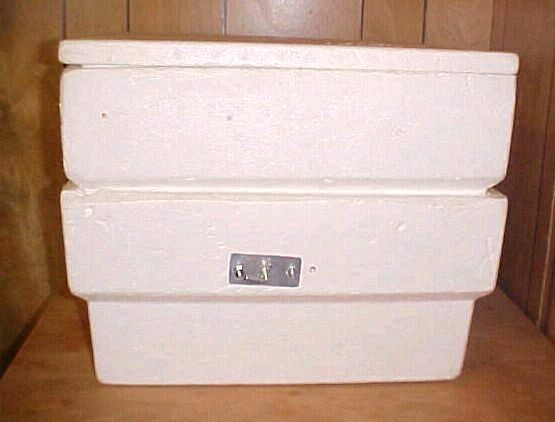
Cut
and installed egg grate to fit. "Egg grate" is what is used
in industrial flourescent light fixtures to help diffuse the light.

I
mounted the thermostat to the side of the fish box. I drilled 3 holes
for the holding bolts and the adjustment doomherhicky that comes with
the thermostat assembly.

I
cut some aluminium to provide more support on the styro fish box,
I’m not sure if I needed to, but there it is

I
cut the egg grate to fit so that it would hold the computer fan in
place. You can see how the computer fan will circulate the air, and
keep all the air the same temperature, under and around the egg boxes
(not pictured). I wired it independently of the heat element, because
the heat element and aluminium will continue to radiate heat unevenly
after the power is cut to them (via the thermostat). The fan runs
continuously to circulate the air.

Side
view of the finished incubator, notice the retaining ring.

This
incubator works very well, and can hold 4 gladware egg containers
(pictures of that to come). It holds stable temperatures better than
a commercial hovabator. It worked so well in fact, that I lent it
with a female blood python we used to have at the zoo that was at
a breeding loan with the only albino blood python in Canada. Unfortunately,
no eggs were produced to test this incubator out on pythons.
With
this assembly, I can easily and quickly move everything to a larger
stryo box or something else, like an old fridge. Pictures of that
to come soon.
If
you do have a hovabators with a fan, you can actually just flip the
lid upside down, and place it into the bottom of an old refrigerator.I
did this, and drilled a hole in the refrigerator so that it wouldn’t
build pressure when it closed. I used the racks to hold egg boxes,
and it works very well.
This
kind of incubator works very well for colubrids. However, I've since
switched over to an easier to build and more temperature stable wet
system system. How to, to be added shortly.
